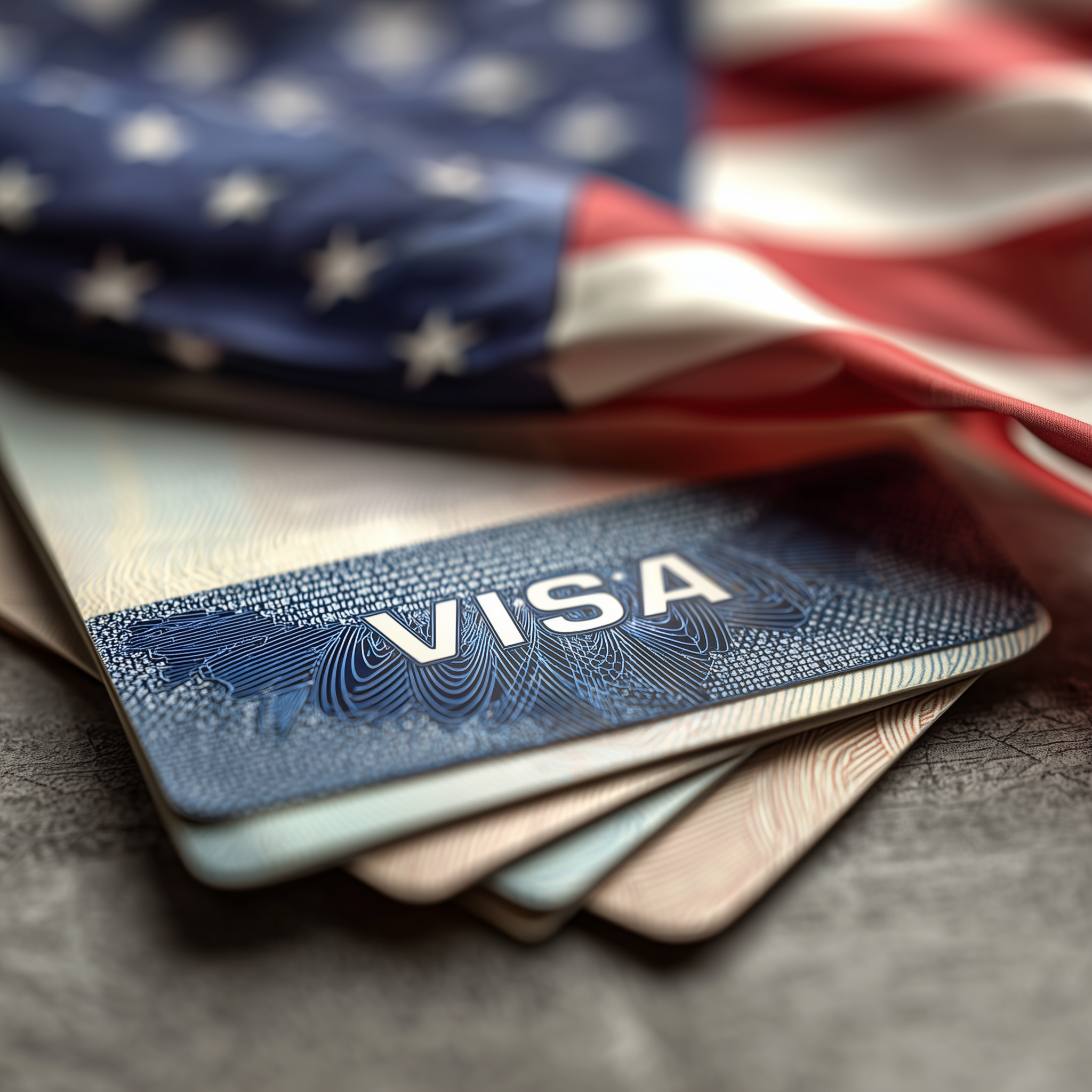With H1-B visa constraints tightening in 2025 and selection rates dropping below 15% in the latest lottery, tech professionals have three primary alternative pathways: the O-1 “extraordinary ability” visa (68% approval rate), L-1 intracompany transfers (78% approval rate), and EB-1/EB-2 permanent residency categories offering direct green card routes without H1-B dependency.
The tech industry’s immigration landscape has fundamentally shifted in 2025. While 442,000 H1-B registrations competed for just 85,000 spots in the FY2026 lottery (announced August 2025), savvy tech professionals and their employers are discovering more reliable pathways that bypass the lottery system entirely.
How Do O-1 Visas Work for Tech Professionals?
The O-1 visa requires demonstrating “extraordinary ability” through at least three qualifying criteria, takes 2-4 months with premium processing, and has no annual cap or lottery system.
The O-1 visa has emerged as the premium alternative for tech workers in 2025. Unlike common misconceptions, you don’t need a Nobel Prize or to be a household name. According to USCIS data through September 2025, tech workers are successfully qualifying through:
Standard Tech Professional Qualifications:
- Published Articles or Papers: Technical blogs, Medium articles, or GitHub contributions with 1,000+ stars
- Critical Role Evidence: Lead engineer on products serving 10,000+ users
- Professional Memberships: IEEE membership or invitation-only tech communities
- Judge of Others: Code review responsibilities, hackathon judging, or technical interview panels
- High Salary: Compensation in the top 10% for your role and geographic area (currently $180,000+ for senior engineers)
“We’re seeing 68% approval rates for properly documented O-1 petitions in the tech sector, compared to the 15% H1-B selection rate,” notes Sarah Chen, Immigration Analytics Director at TechVisa Research Institute (September 2025 report).
What Are the L-1 Visa Requirements and Advantages?
L-1 visas enable companies to transfer employees from foreign offices to the US, requiring just one year of prior employment abroad and offering approval rates of 78% for tech positions.
The L-1 visa category has become increasingly strategic for tech companies in 2025:
L-1A (Managers/Executives):
- Tech leads managing 4+ person teams
- Product managers with budget authority
- Engineering directors overseeing projects
L-1B (Specialized Knowledge):
- Engineers with proprietary system expertise
- Developers with unique codebase knowledge
- Technical architects with company-specific platform experience
2025 L-1 Processing Advantages:
- Blanket L-1 Programs: Companies with 10+ L-1 approvals can establish blanket petitions, reducing individual processing to 2-3 weeks
- Canadian Citizens: Can apply directly at the border with same-day approval
- Dual Intent Allowed: Can pursue green cards while on L-1 status
Recent September 2025 USCIS data shows L-1B approval rates for software engineers at 78% when demonstrating specialized knowledge of proprietary systems.
Which EB Category Offers the Fastest Path to Green Cards?
EB-1 and EB-2 NIW categories provide direct green card routes without H1-B requirements, with current processing times of 8-18 months for most countries (excluding India/China backlogs).
EB-1A (Extraordinary Ability):
- Similar criteria to O-1 but higher evidence standard
- No employer sponsorship required (self-petition allowed)
- Current priority dates for most countries (except India: 2019, China: 2021)
EB-1C (Multinational Manager):
- For L-1A holders after one year in the US
- 87% approval rate in tech sector (September 2025 data)
- Priority date current for all countries
EB-2 NIW (National Interest Waiver):
- Self-petition option for advanced degree holders
- Tech professionals qualifying through:
- AI/ML work with societal impact
- Cybersecurity expertise
- Healthcare technology innovations
- Clean energy tech development
“The EB-2 NIW has become our go-to strategy for senior engineers with master’s degrees. We’re seeing 73% approval rates when properly framing the national interest argument,” states Michael Rodriguez, Former USCIS Officer and current Senior Immigration Strategist (Tech Immigration Quarterly, September 2025).
Advanced Implementation Strategies for Tech Companies
Successful tech companies in 2025 are implementing multi-track immigration strategies that layer different visa categories to ensure continuous work authorization and pathway redundancy.
The Progressive Pathway Model:
- Immediate Start: CPT/OPT for recent graduates or H1-B lottery registration
- Parallel Processing: Simultaneous O-1 and L-1 evaluation
- Green Card Launch: EB category filing within first year
- Backup Protocols: Alternative visa categories if primary path faces delays
Company-Specific Optimization:
For Startups (Under 50 employees):
- Focus on O-1 for exceptional talent
- Establish foreign entities for future L-1 options
- Prioritize EB-2 NIW for self-petition flexibility
For Scale-ups (50-500 employees):
- Develop L-1 blanket petition eligibility
- Create O-1 templates for common roles
- Batch EB-1C processing for managers
For Enterprises (500+ employees):
- Maximize intracompany transfer infrastructure
- Establish preferred attorney relationships for volume discounts
- Develop internal immigration mobility programs
Common Mistakes to Avoid in Alternative Visa Strategies
Mistake 1: Underestimating O-1 Qualification Potential What goes wrong: Tech professionals assume they don’t qualify without prestigious awards The reality: 68% of approved O-1 tech petitions use alternative evidence like GitHub contributions and technical blog readership Better approach: Document all technical contributions, speaking engagements, and code review activities starting now
Mistake 2: Missing L-1 Planning Windows What goes wrong: Companies wait until H1-B lottery failure to explore L-1 options The reality: L-1 requires 12 months of prior foreign employment Better approach: Proactively establish foreign employment relationships for future L-1 eligibility
Mistake 3: Sequential Rather Than Parallel Processing What goes wrong: Pursuing one visa option at a time, losing months of potential work authorization The reality: Multiple visa petitions can be filed simultaneously without conflict Better approach: File O-1, L-1, and green card applications concurrently when eligible
Frequently Asked Questions
Can I qualify for an O-1 visa as a software engineer without published papers?
Yes, absolutely. In 2025, successful O-1 petitions for software engineers commonly use GitHub contributions, technical blog readership metrics, conference presentations, and evidence of critical roles in significant projects. The key is documenting impact and recognition within the tech community.
How quickly can I get an L-1 visa if my company has offices abroad?
With premium processing, L-1 individual petitions take 15 calendar days for USCIS adjudication. If your company has an approved blanket L-1 petition, visa processing can be completed in 2-3 weeks total, including consular appointment.
Is it better to pursue EB-1 or EB-2 NIW for a senior software engineer?
For most senior software engineers with master’s degrees, EB-2 NIW offers a more accessible path with 73% approval rates. EB-1A requires meeting a higher extraordinary ability standard but allows priority date retention if transitioning from another category.
Can I change from H1-B to O-1 without leaving the United States?
Yes, you can file for a change of status from H1-B to O-1 while remaining in the United States. Premium processing ensures a decision within 15 days, and you can begin working on O-1 status immediately upon approval.
What salary level helps qualify for O-1 in tech?
As of September 2025, salaries above $180,000 for senior engineers or $220,000 for staff/principal engineers strongly support O-1 high remuneration claims, though this is just one factor among several possible qualifying criteria.
Do L-1 visas have prevailing wage requirements like H1-B?
No, L-1 visas don’t have formal prevailing wage requirements, though the salary must be appropriate for the position and location to avoid triggering public charge concerns.
Can startup founders qualify for O-1 visas?
Yes, startup founders frequently qualify for O-1 visas by demonstrating funding raised (especially from prominent VCs), user growth metrics, press coverage, and advisory board positions with other companies.
How does the EB-1C green card process work for L-1A holders?
L-1A managers can file for EB-1C green cards after one year of US management experience. The process typically takes 8-12 months with premium processing and has an 87% approval rate in the tech sector.
What evidence proves “specialized knowledge” for L-1B?
Specialized knowledge for L-1B requires showing advanced expertise in company proprietary systems, unique codebases, or specialized tools that would take 6+ months for a similarly experienced professional to acquire.
Can I self-petition for an EB-2 NIW while on OPT?
Yes, F-1 OPT holders can self-petition for EB-2 NIW. The key is demonstrating your work is in the national interest, which tech professionals often establish through work in critical infrastructure, healthcare technology, or emerging technologies.
Are there advantages to filing in Utah or Arizona for tech worker visas?
Utah and Arizona offer faster USCIS processing times at their service centers, with Utah averaging 2-3 weeks faster for I-140 petitions. Both states also have growing tech hubs that strengthen local expertise arguments for O-1 petitions.
What’s Next for Tech Worker Immigration?
The September 2025 immigration landscape suggests three critical trends for tech workers:
AI and Emerging Tech Fast Tracks: USCIS is developing expedited pathways for AI researchers and quantum computing specialists, with pilot programs expected by Q4 2025.
State-Level Immigration Programs: California, Washington, and Texas are proposing state-sponsored visa programs modeled after Canada’s Provincial Nominee Program, potentially launching in 2026.
Corporate Immigration Infrastructure: Major tech companies are establishing dedicated immigration strategy teams, with Google and Microsoft now offering automatic O-1 sponsorship for senior engineers meeting specific criteria.
“By 2026, we expect 40% of tech workers to bypass H1-B entirely, pursuing direct O-1 or EB category paths from day one,” predicts Jennifer Walsh, Director of Immigration Policy at the Technology Council of North America (September 2025 Tech Immigration Forecast).
About Herbert Law Group: Herbert Law Group specializes in tech worker immigration with offices in Utah and Arizona. Our attorneys have successfully processed numerous O-1, L-1, and EB category petitions for technology professionals, maintaining exceptional approval rates through strategic case preparation and documentation.











